Though far closer to Germany than to the Netherlands’ capital of Amsterdam, Groningen is a quintessentially Dutch town. Composed of winding streets and canals lined with picturesque and mostly low-rise brick buildings, the historic center is surrounded by a ring of often insensitive late 20th- and 21st-century development that sometimes shocks in its brutal jump in scale and materiality. Commissioned by the municipality, the Kunstwerf (literally “art yard”), which provides rehearsal and administrative spaces for four local performance companies, is located at the junction of the old and the new Groningen, on the site of a former gasworks. When submitting their schemes, competition entrants had to take into account the substantial landmarked remnants of this past, which include a row of workers’ houses, a large electric-power station (already home to a renowned dance company, which is what prompted the creation of this performance cluster), a villa, and a small entrance pavilion, all dressed up in an eclectic livery of brown stock brick with stone and redbrick trim.
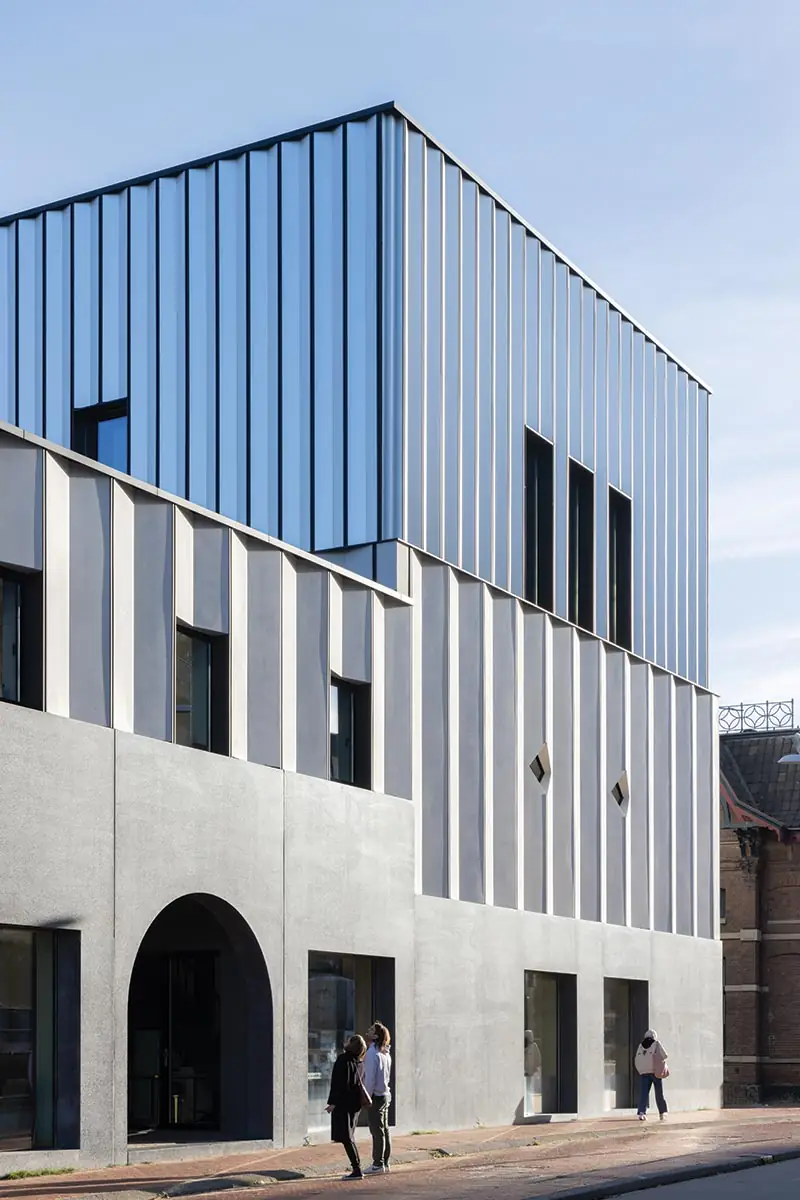
Bands of black concrete, faceted white concrete, and concertinaed aluminum comprise the Kunstwerf’s facade (above and top of page). Photo © Iwan Baan, click to enlarge.
“It would have been simpler and cheaper to build an efficient, compact box, which is what the competition brief encouraged,” says Donna van Milligen Bielke, winner of the 2017 design contest with her regular collaborator Ard de Vries. “But we didn’t feel a big box was right here, either for the town or the historic buildings. So we took a risk and fragmented the program.” To tie their project into the existing fabric, the duo built two L-shaped structures: a smaller one, containing a double-height rehearsal hall, located at the northeastern edge of the plot, between the housing and the power station; and, lined up along the north- and southwestern boundaries, a far more substantial building, articulated as three distinct volumes, which contains the other five practice rooms. Where the site’s edges are free of buildings, the architects added arcades and colonnades to close the perimeter visually.
“I’m fascinated by the frontier between architecture and urbanism,” explains van Milligen Bielke. “Not just by making a building in the city, but by continuing the city with a building. What can a project give the community?” To Groningen, she and de Vries offered “the courtyard, which brings the Kunstwerf’s users and the population together. We made it as big as possible so that it becomes a public place of conviviality.” Paved in brick, which ensures a certain continuity with the historic fabric, the enclosed yet porous space enjoys multiple accesses, including two tunnel entrances through the larger block, as well as planting by Piet Oudolf, which in summer will grow into low outdoor “rooms.”
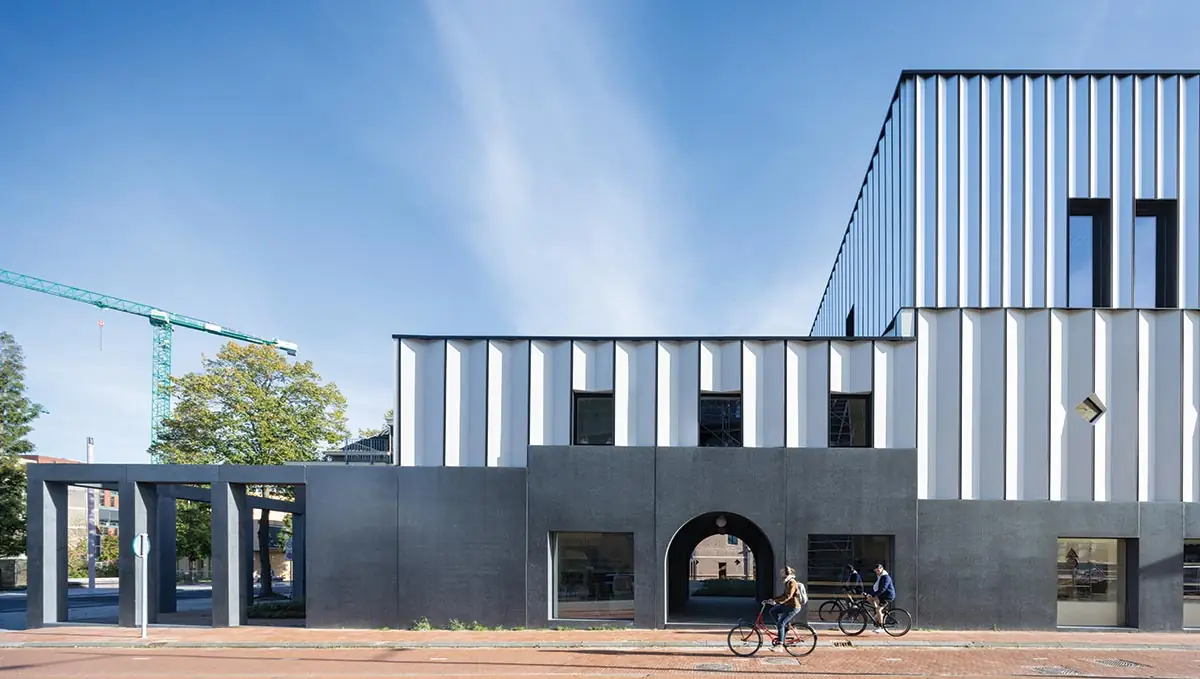
1
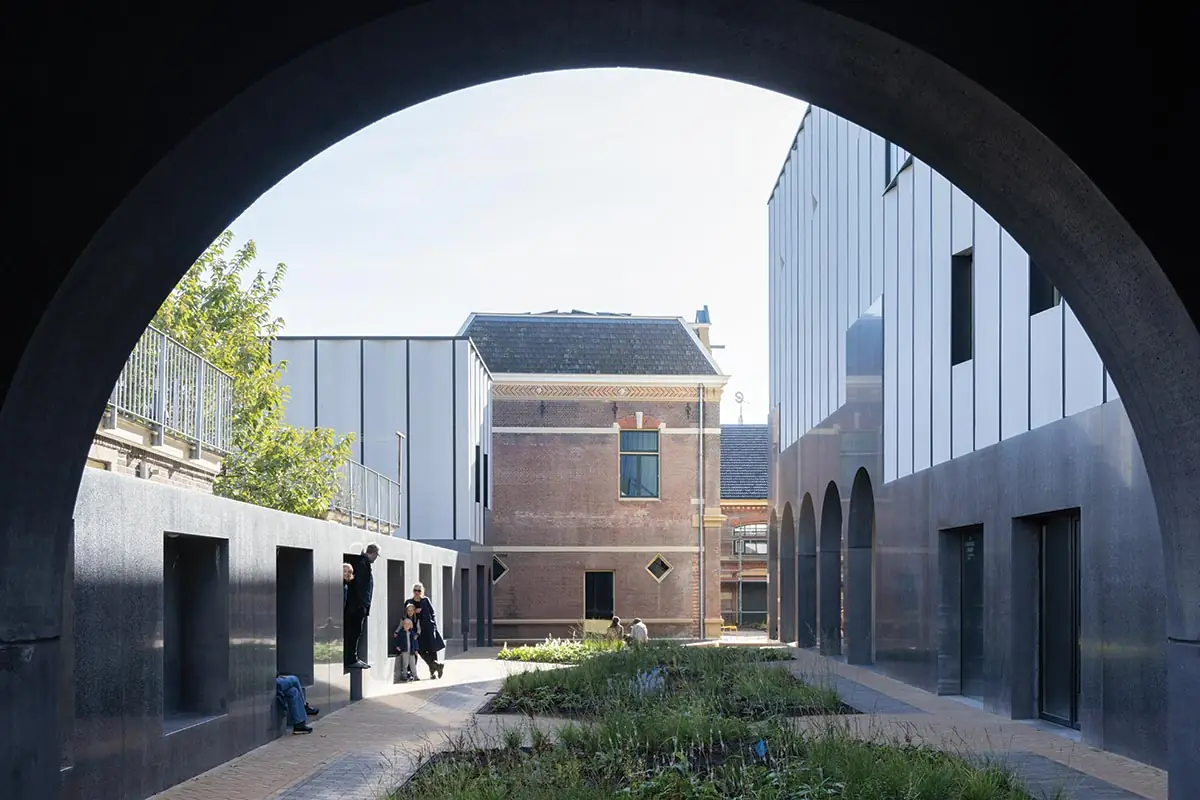
2
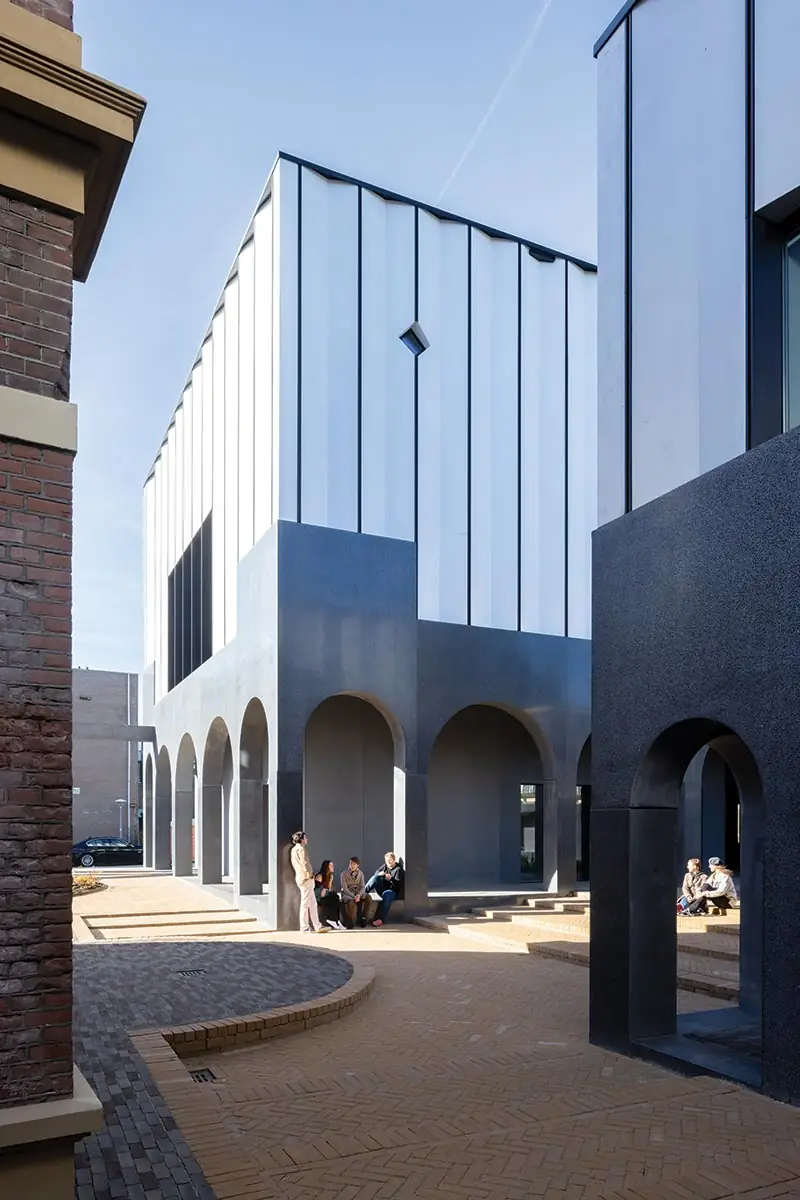
3
Arcades, courtyards, portals, and vignettes of historic buildings (1-3) extend the urbanism of the surrounding context (4). Photos © Iwan Baan
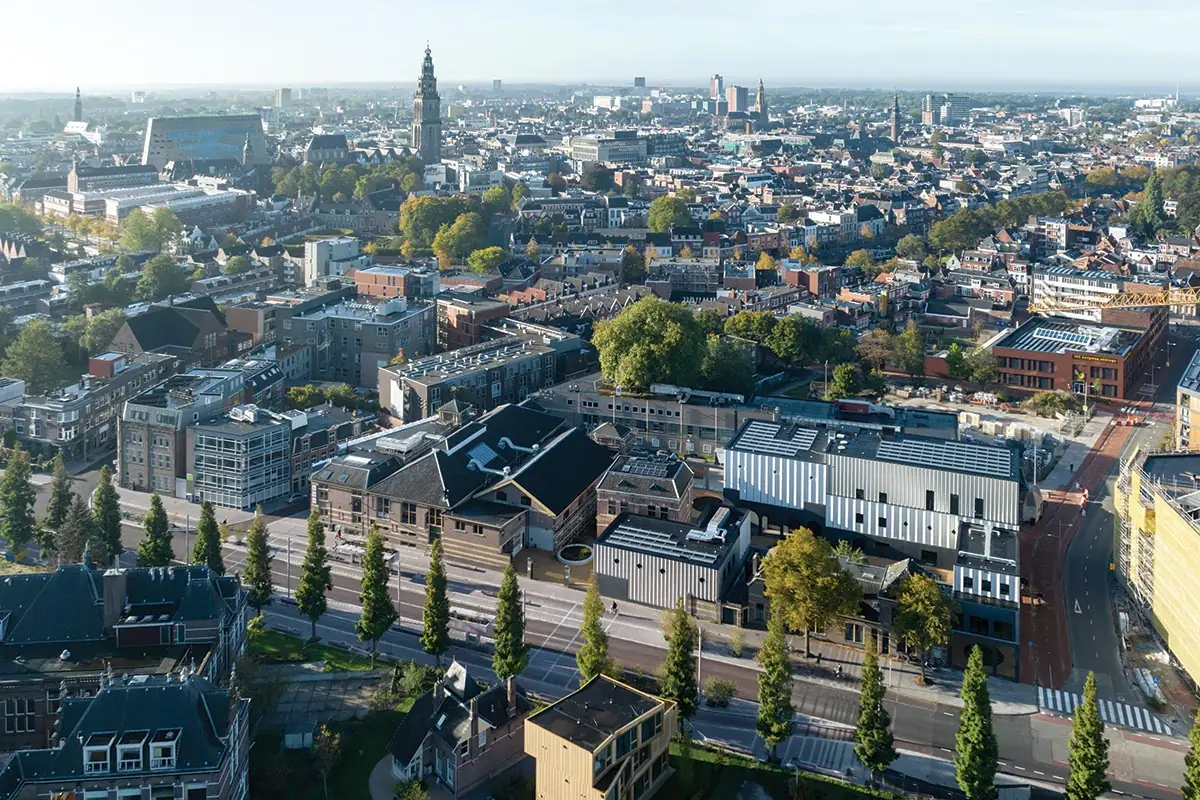
4
After addressing the urban parameters, the architects considered how they might construct their scheme. “We were up against two big constraints,” says de Vries. “First, because of gas extraction in the region, Groningen is prone to earthquakes. Second, the rehearsal spaces needed to be acoustically insulated both from each other and the neighbors.” After studying all the options, the only viable solution was a steel frame—bendy enough to withstand seismic shaking—clad with thick concrete (prefabricated off-site) for acoustical performance. “Almost all the concrete pieces are different,” continues de Vries, “and the way everything connects had to be carefully handled because of sound transmission.”
Next came the question of how the Kunstwerf should present itself to the outside world. “These big rehearsal halls are an essentially closed function, but, in such a delicately detailed historic context, we didn’t want our buildings to look big and blank,” recalls van Milligen Bielke. “We work with a lot of references,” adds de Vries, “and often talk by sharing images” (an Instagram-age method the duo compares to hip-hop sampling). In solving the Groningen conundrum, two sources proved particularly important: Sebastiano Serlio’s 1545 stage set for a tragic scene, whose multiple entry points and arcades informed the urban planning, and Hans Poelzig’s now-demolished 1919 Großes Schauspielhaus in Berlin, whose blind facades, animated by colossal fluting, informed the Kunstwef’s exterior. In Groningen, banded black-and-white elevations—on the ground floor, black concrete, polished on its outer surfaces and sand-blasted under the arcades; for the next tier, white concrete in vertical black-edged faceted strips that cast shadows when the sun shines; and, up top, concertinaed white-aluminum cladding, separated into thinner bands by more black edging—are intended as foils to the warm brick. The elevation rhythm quickens as it rises, and in certain weather conditions will, the architects hope, merge with the sky as the lacquered metal reflects the light.
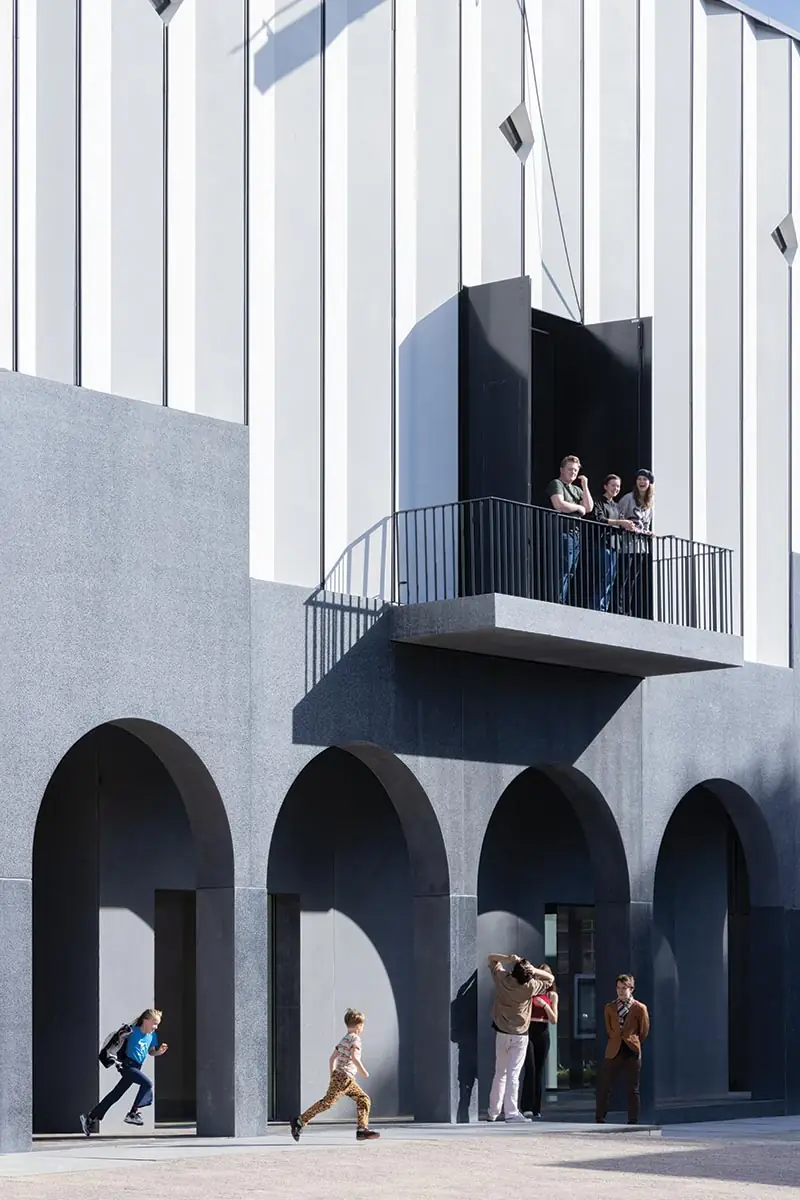
5
Some theater spaces open up to the city (5 & 6), while others are more enclosed (7). Photos © Iwan Baan
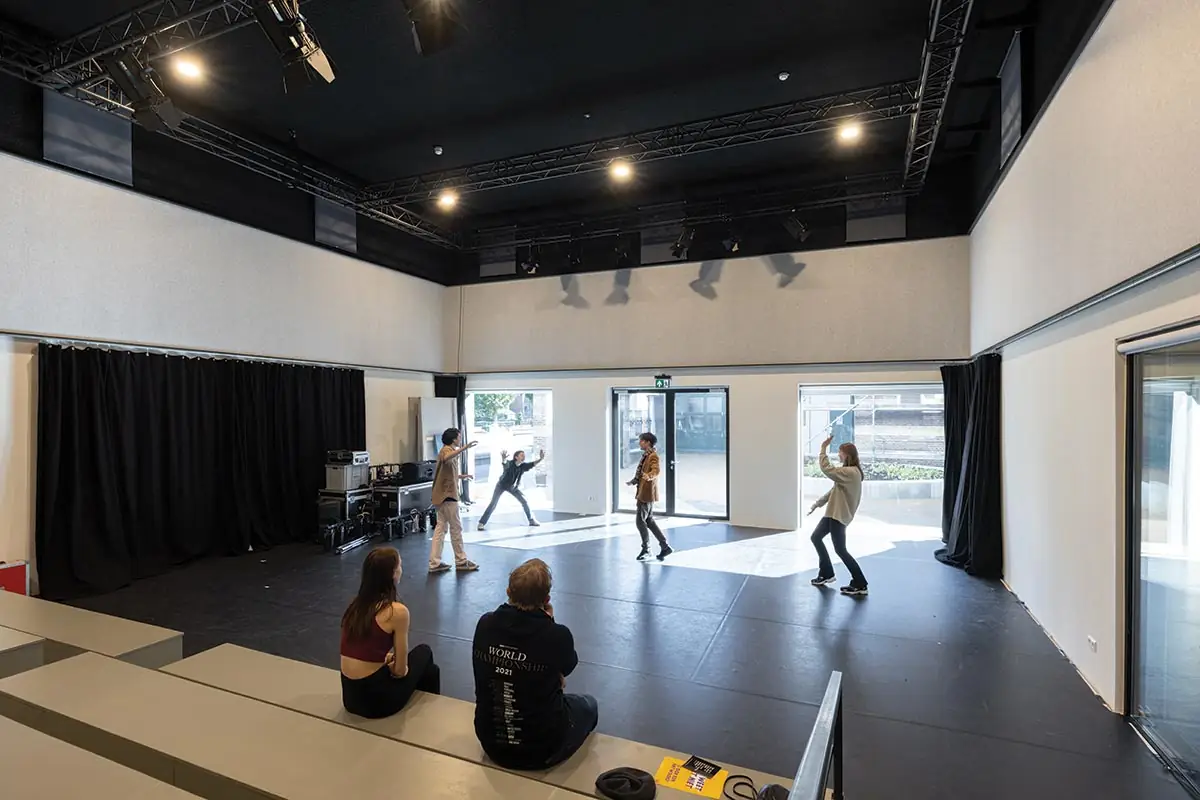
6
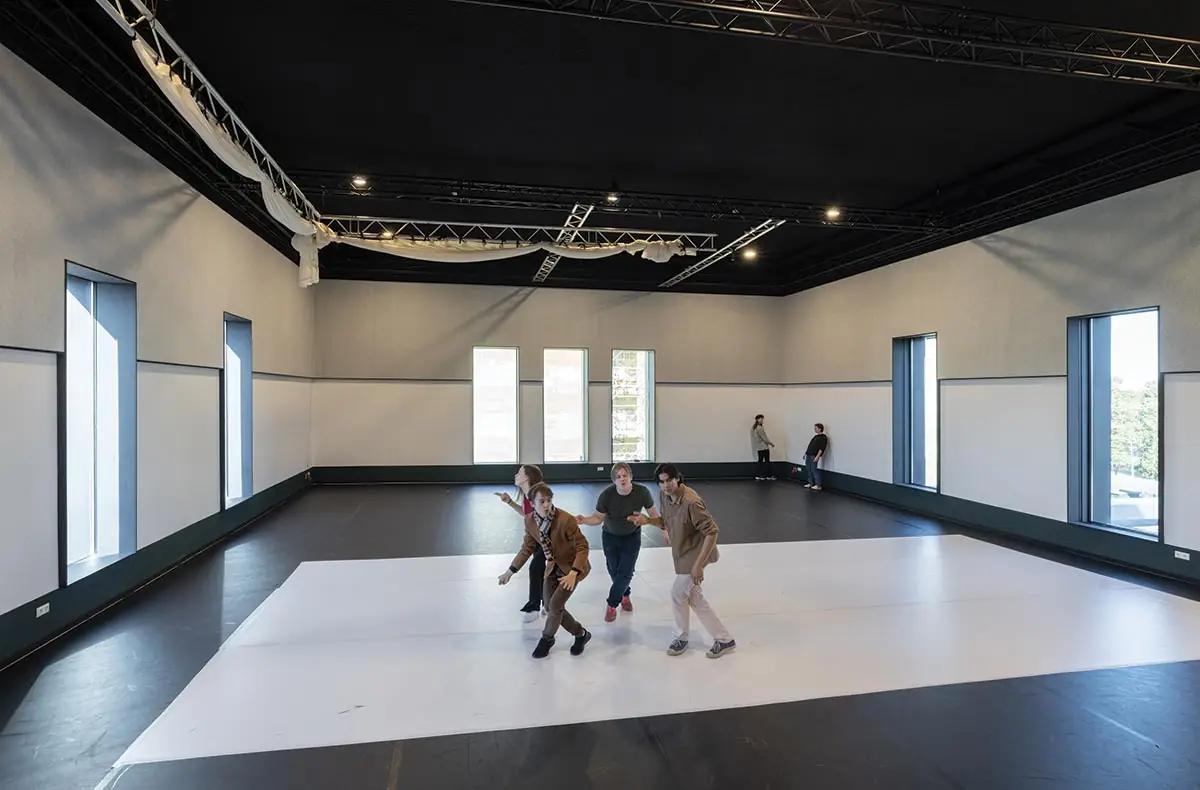
7
Unlike the highly controlled exterior, which the pair developed using multiple models and mockups, the interior was left to users to fit out, since the $5.6 million construction budget was too low to cover interior design. “In the beginning, it was a bit of a shock,” laughs van Milligen Bielke. “I mean, purple floors and walls next to an orange bathroom . . . But it’s fantastic that the users were able to make themselves at home.” Generously dimensioned, with concrete ceilings, steel framing, and HVAC often exposed, the Kunstwerf’s interiors are tough enough to take whatever is thrown at them.
A true labor of love, this is van Milligen Bielke’s first built project and de Vries’s second (she was just 32 and he 37 when they won the competition). “People have tried to label us as part of a new generation—the ‘weaving’ generation, they call it—reacting to SuperDutch,” she says. Deceptively simple, the Kunstwerf is indeed beautifully woven into the historic web, as came evocatively alive on visiting. Stored in front of a ground-floor arcade, a trash can and brush brought to mind Pieter de Hooch’s 1658 canvas The Courtyard of a House in Delft, where a bucket and broom dominate the foreground of a typically Dutch scene. Transposed in spirit, without the slightest resort to pastiche, the lessons of the past elegantly underpin this adroit and confident début.
Click plans to enlarge
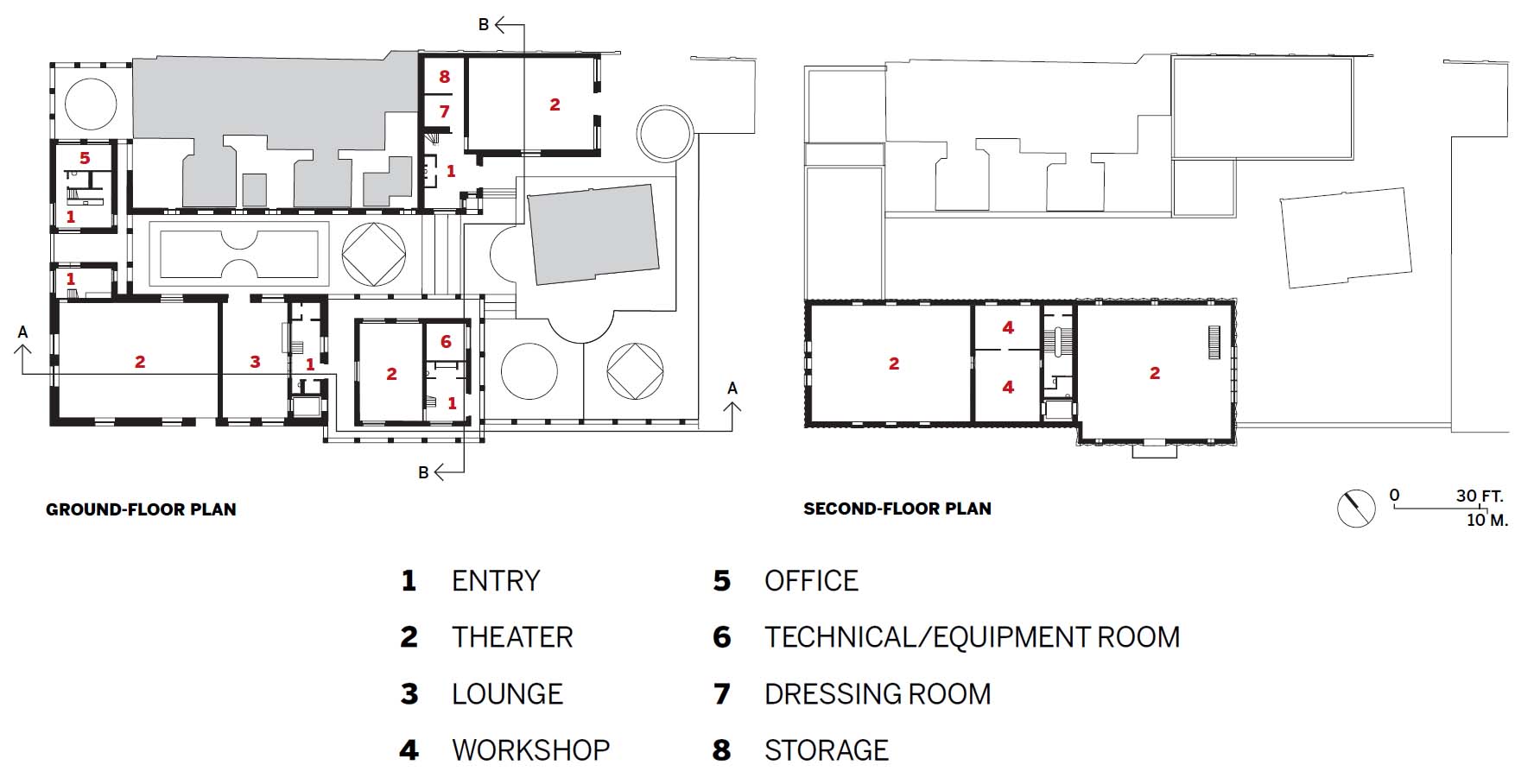
Click sections to enlarge
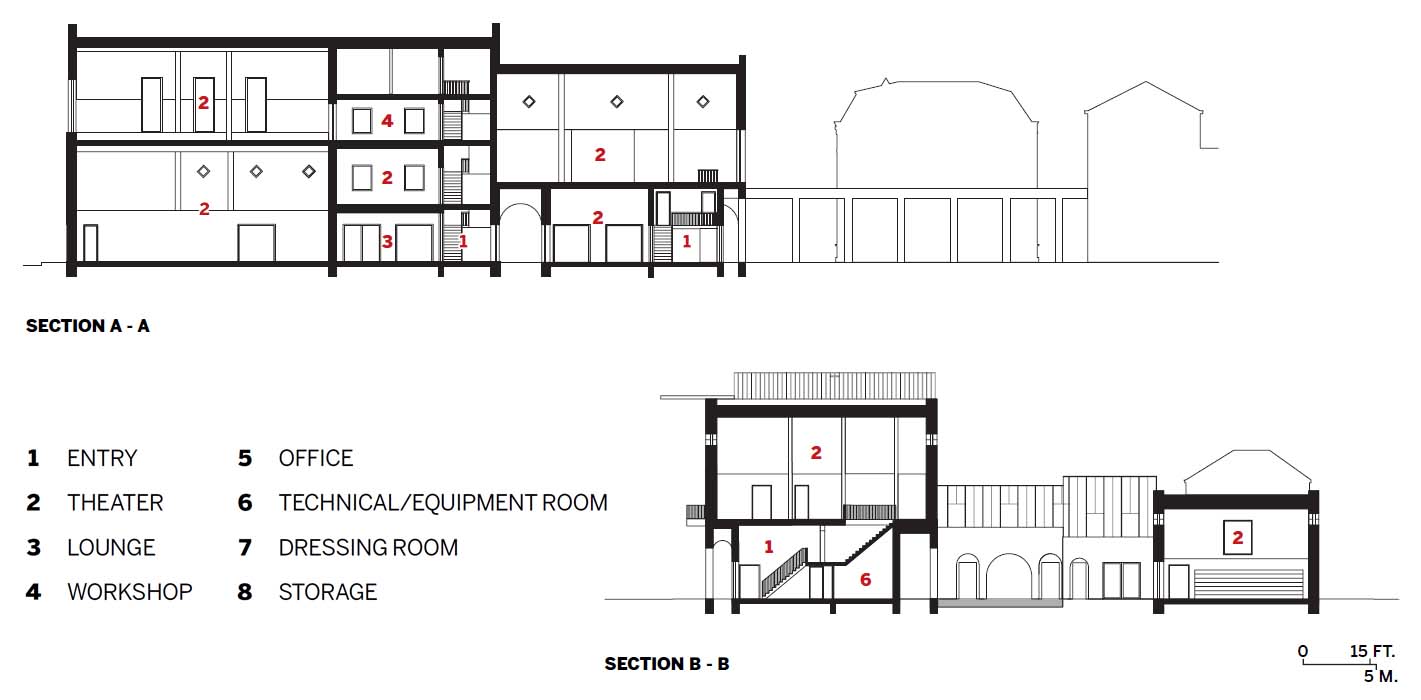
Credits
Architect:
Ard de Vries Architecten; Studio Donna van Milligen Bielke; Julia Gersten
Engineers:
ABT Wassenaar (structural); Deerns (m/e/p)
General Contractor:
Geveke / Croonwolter & Dros
Consultants:
Piet Oudolf, Delta Vormgroep (landscape);
Client:
Municipality Groningen
Size:
28,000 square feet
Cost:
$5,987,000
Completion Date:
September 2022
Sources
Metal Panels:
TSV
Windows:
Alcoa
Tile:
Mosa
Doors:
Alcoa; Merford





